Landing pages are a must-to-have conversion tool. When it comes to a landing page as opposed to a website page, its target is different: it was built for one reason-to lead the visitor in completing an action, such as submitting a form, signing up for a service, or downloading a resource. In other words, effective landing pages for lead generation are focused in terms of design and content, appealing, with minimal distractions, and those leading the user toward conversion.
Properly created landing pages can do a lot to improve lead generation, provided there is information on actual and potential customers. We’ll discuss how to build and optimize landing pages for lead generation in this blog.

What Are Landing Pages for Lead Generation?
landing pages for lead generation are a one-page web page that is designed to bring visitors and convert them into leads by eliciting a specific action from them, such as filling out a newsletter signup form or downloading an offered resource. Based on the design of a landing page, it can ensure that there is only one primary objective or CTA, thus not giving visitors too many things to do at once.
Key Features of a Good Landing Page
- Simple Message: The main message and call to action are always clear, in line with the intent of the visitor.
- Minimal distractions: Typically, a landing page does not include any navigation controls, such as menus or links, that would steer attention elsewhere.
-
Compelling Offer: This can be an e-book free, access to a webinar, or maybe some consultation. It is always useful and relevant to the visitor.
- Easy Form Submission: The form should request only the minimum information in order to cause as much friction as possible to the visitor.
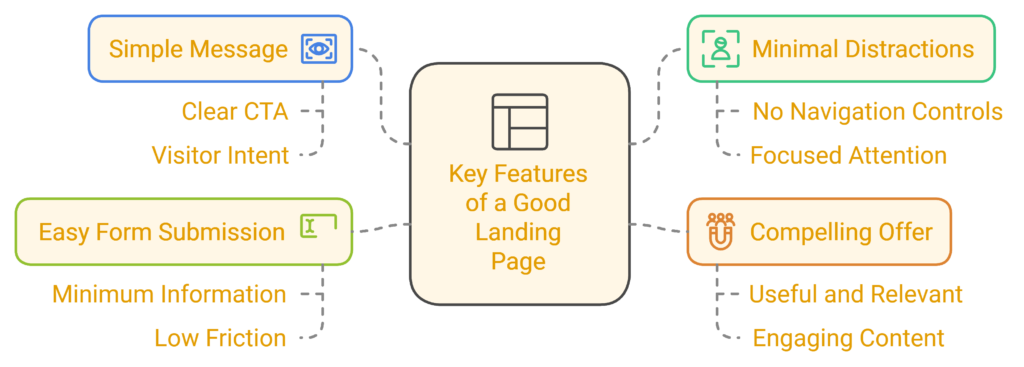
Role of Landing Pages in Lead Generation
The following are several critical roles landing pages play in a lead generation strategy:
1. Communicating the Targeted Message
Unlike most web pages, lead generation landing pages tend to be very targeted in focus on one message or offer. This helps create an easier connection with the visitor; in other words, it immediately addresses interest and shows the visitor where to go to convert.
2. Capturing Visitor Information
Most landing pages have a form requesting visitor’s information. A lead generation must have such a form; visitors fill out this form in exchange for something valuable, say a free guide, consultation, or entry to special content.
3. Tracking and Measuring Success
The utilization of landing pages ensures tracking of lead generation. Metrics that help in the determination of the effectiveness of the page include conversion rate, bounce rate, and time on page-all of which inform future optimization.
4. Building Trust through Clear Communication
A landing page that is successful is the one that inspires trust as it tells visitors exactly what they are going to get in exchange for their action. This clear communication may make the visitor feel comfortable to give out his information by eliminating any potential concerns a visitor may have before actually committing to it.
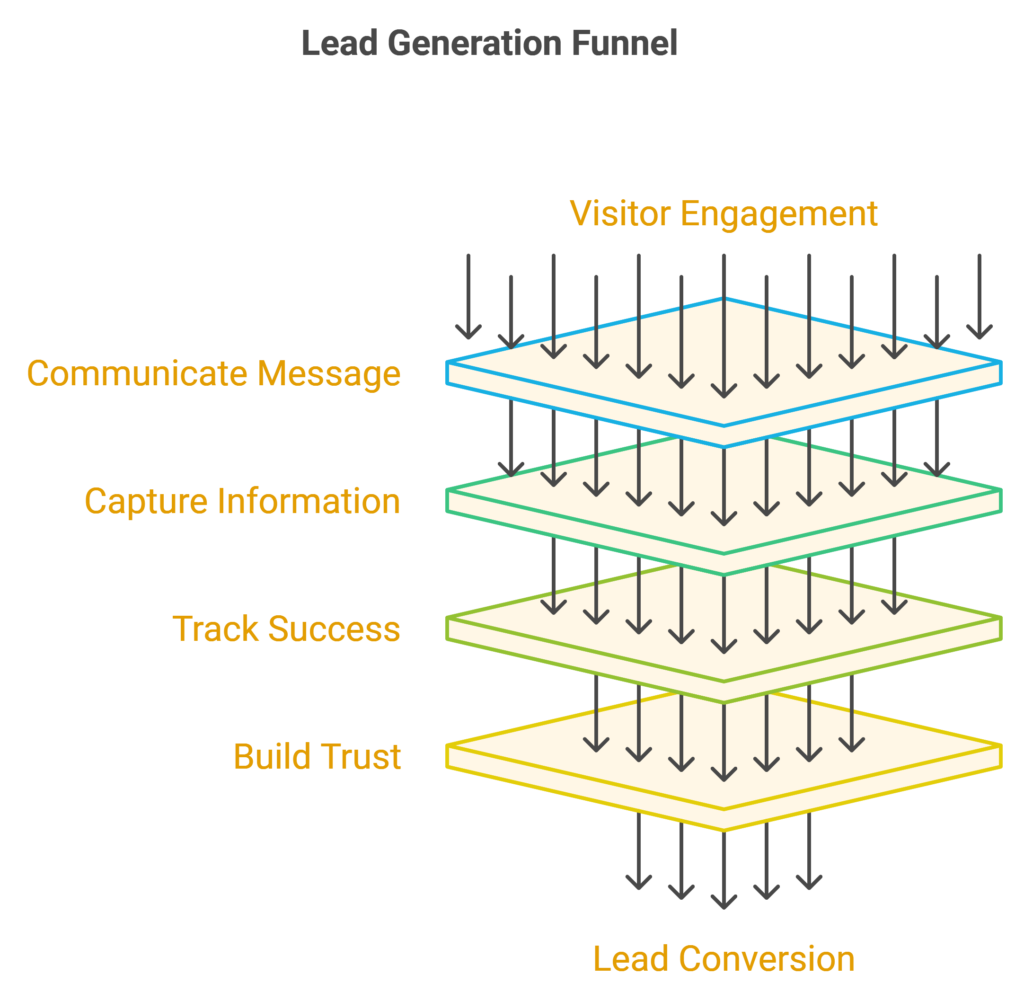
High-Performing Landing Pages’ Essential Ingredients
To make landing pages for lead generation work effectively, they must be carefully designed with the following elements:
1. Strong Headline
A headline that is attractive and strong can easily make the visitor stay for longer and learn about the purpose of the page.
Example: “Get Your Free Guide to Successful Content Marketing”
2. Copywriting-Compelling Message
The effective copy will talk about the visitor’s needs, pain points, and desires. Keep in focus clear, benefit-oriented language to show what visitors will gain from taking action. Use fewer jargons and less complexity while writing in clear and concise copy.
3. Clear Call to Action (CTA)
Any landing page should have a powerful CTA. A CTA button should be very conspicuous, but with enticing language, such as “Get Started Now” or “Download Your Free Guide.”
4. Short Form
It should seek only essential information. Too many questions can also deter visitors from completing it. For a lead magnet, normally this will be name and email address. More complex offers, for example consultations, may warrant more information.
5. Graphics and Branding
A good landing page should look beautiful and should match the brand identity. The right images, consistent colors, and a neat layout give a professional look that makes a visitor believe the site is trustworthy.
6. Trust Signals
Trust signals such as customer testimonials, case studies or endorsements by trusted sources can reassure visitors and boost conversions. Trust signals validate the offer and tell visitors to take action.
7. Fast Loading Time
Page speed is another very critical aspect in both user experience as well as search engine optimization. Loading a landing page too slow results in greater bounce rates and lost conversions. Goal is to be within 3 seconds.
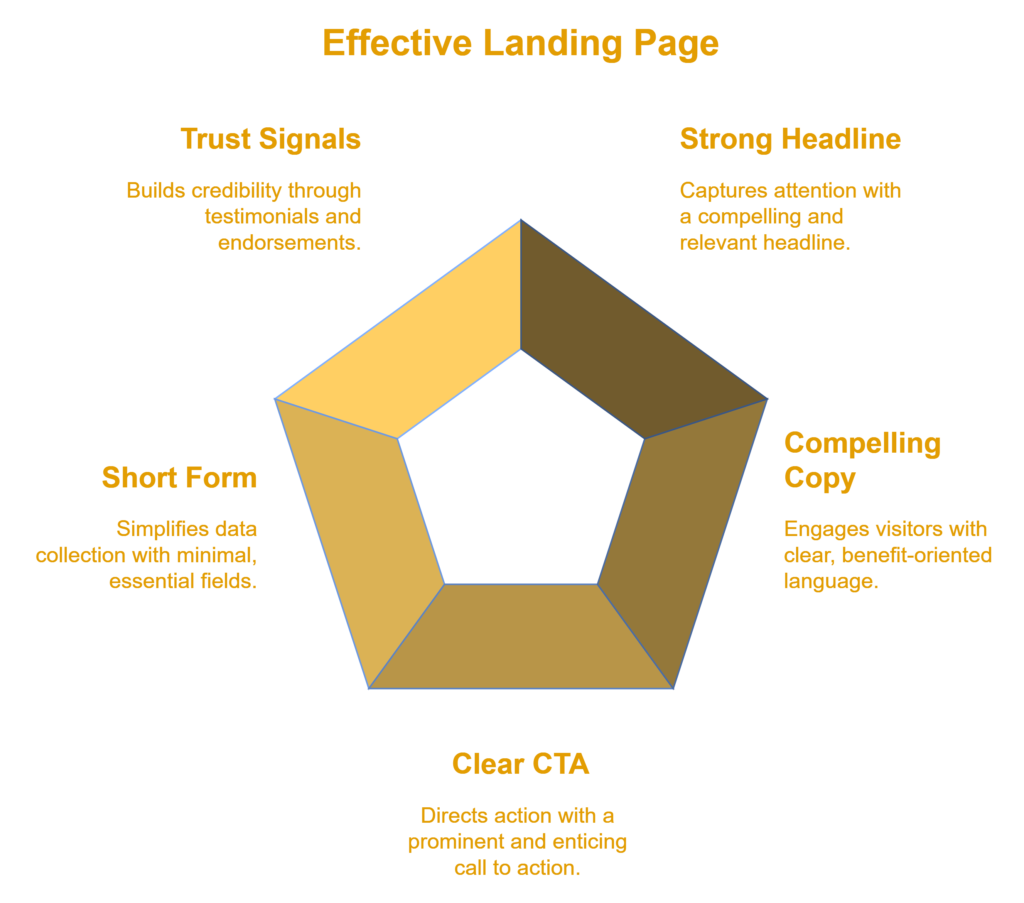
How to Optimize Your Landing Page for Lead Generation
The final step for you, once your landing page has been created is to fine-tune the landing page itself to achieve more leads and conversions. How?
1. A/B Test Your Landing Page Elements
A/B testing can be described as the best way to ensure that a landing pages for lead generation is optimizes. Through creating different copies of your page and testing up different elements of head, CTA, or images, you discover which performs best and improve that in your conversions.
2. Optimize for Mobile Users
Given that more than half of traffic on websites is from mobile, the need to optimize your landing page for mobile becomes very imperative. Your landing page should be responsive with clear text, right-sized buttons, and user-friendly features on the small screens
3. Focus on the UX
Lead generation definitely requires a good user experience. A clutter-free and easy-to-navigate layout, fewer form fields, as well as clear messaging, contributes to a seamless experience that keeps visitors engaged and leads them towards conversion.
4. Strengthen Your CTA
Your call-to-action is what will be presented prominently for the audience, hence ought to be visible and attractive. You may have several tests of a call to action, depending on either the color or the actual text and possibly position which best suits their understanding, so ensure it highlights well with the page color.
5. Using High-Quality Visuals
Quality visuals will actually help capture attention and boost the user experience. In this regard, images or video content should be chosen reflecting the value of the offer and relevance to your brand. Avoid generic stock photos as they are an obvious detractor of authenticity.
6. Leverage Scarcity or Urgency
Scarcity or urgency can make the person move faster by inculcating elements such as the time limits for visiting or, say, “limited number available” or even countdown timers. The former aspect will help bring urgency into the picture, and so conversion chances increase with those elements.
7. Utilize Testimonials or Case Studies
Another credibility builder on your landing page is social proof, like customer testimonials and case studies. You can have real testimonials from happy customers or some successful case studies. This is sure to build confidence in the visitors, thus making them convert.
8. Short and Simple Form
Long forms are another major lead generation barrier. Limit the number of fields in your form to just those that are absolutely required. Simplifying the form reduces friction and makes people more likely to complete the form.
9. Be Fast to Load
Loading speed directly impacts conversion rates. Optimize images, reduce code, and cache your landing page to make sure it loads fast. A fast-loading page can enhance user experience and increase conversion rates.
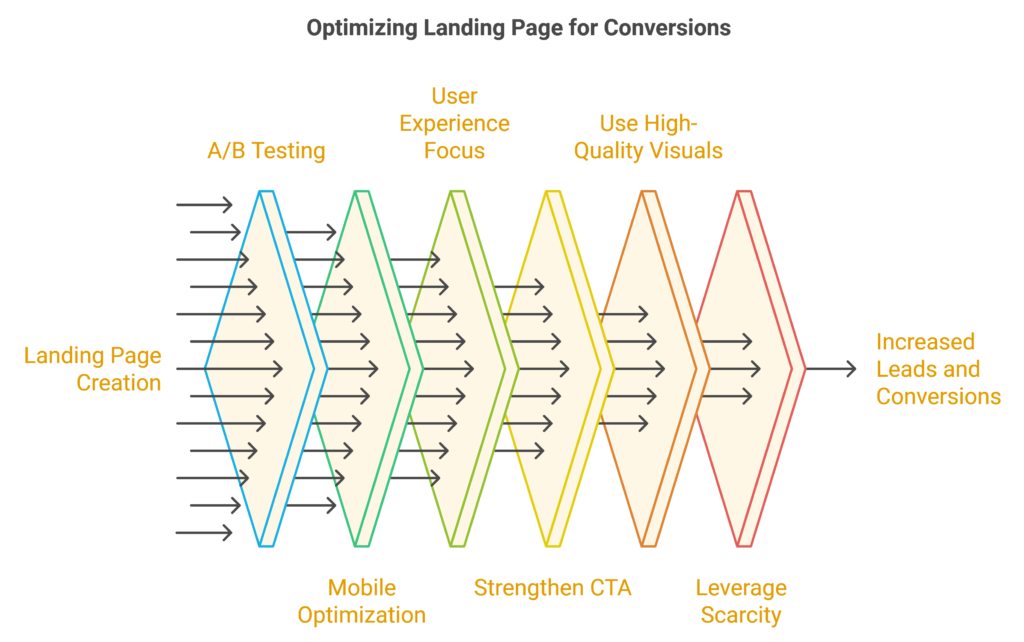
Measuring Success of Your Landing Page
After you have placed your landing pages for lead generation, you need to track performance to understand what is working and what needs improvement. The following are key metrics to monitor:
- Conversion Rate: The percentage of visitors taking the desired action. Thus, a high conversion rate indicates that your landing pages for lead generation is creating leads successfully.
- Bounce Rate: Measures the percentage of visitors who leave the page without interaction. Sometimes, it may imply that your page requires better engagement tactics or more relevant content.
- Time on Page: This is the amount of time that viewers spend on your landing page. The higher the stay time, the more interested viewers are in what you have presented to them, and hence relevant to their issues.
- Form Abandonment Rate: Where viewers start but do not finish a form, that may mean forms are lengthy or over elaborate.
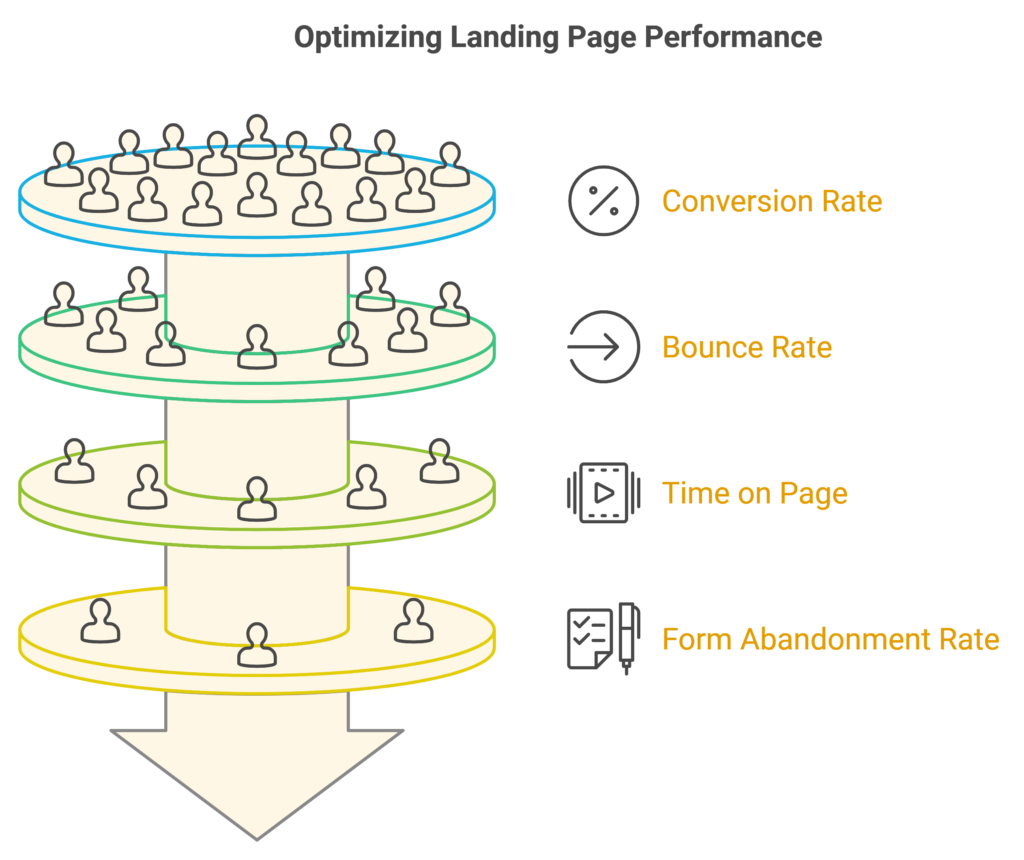
Conclusion
Correct optimization and designing of landing pages for lead generation will definitely make a great difference in the lead generation process. It is a way of getting clear messaging, effective call for action, user-friendly design, and trust signals on your landing pages for lead generation so that leads can be captured and businesses can grow.
The process doesn’t end once your landing page is live. Continuously monitor performance, conduct A/B testing, and optimize the page based on insights to ensure you’re maximizing conversions. With the right approach, landing pages for lead generation can become one of your most valuable tools for growing your lead base and driving long-term success. Check out other blogs for more information: How to Use Retargeting Ads for Lead Generation.